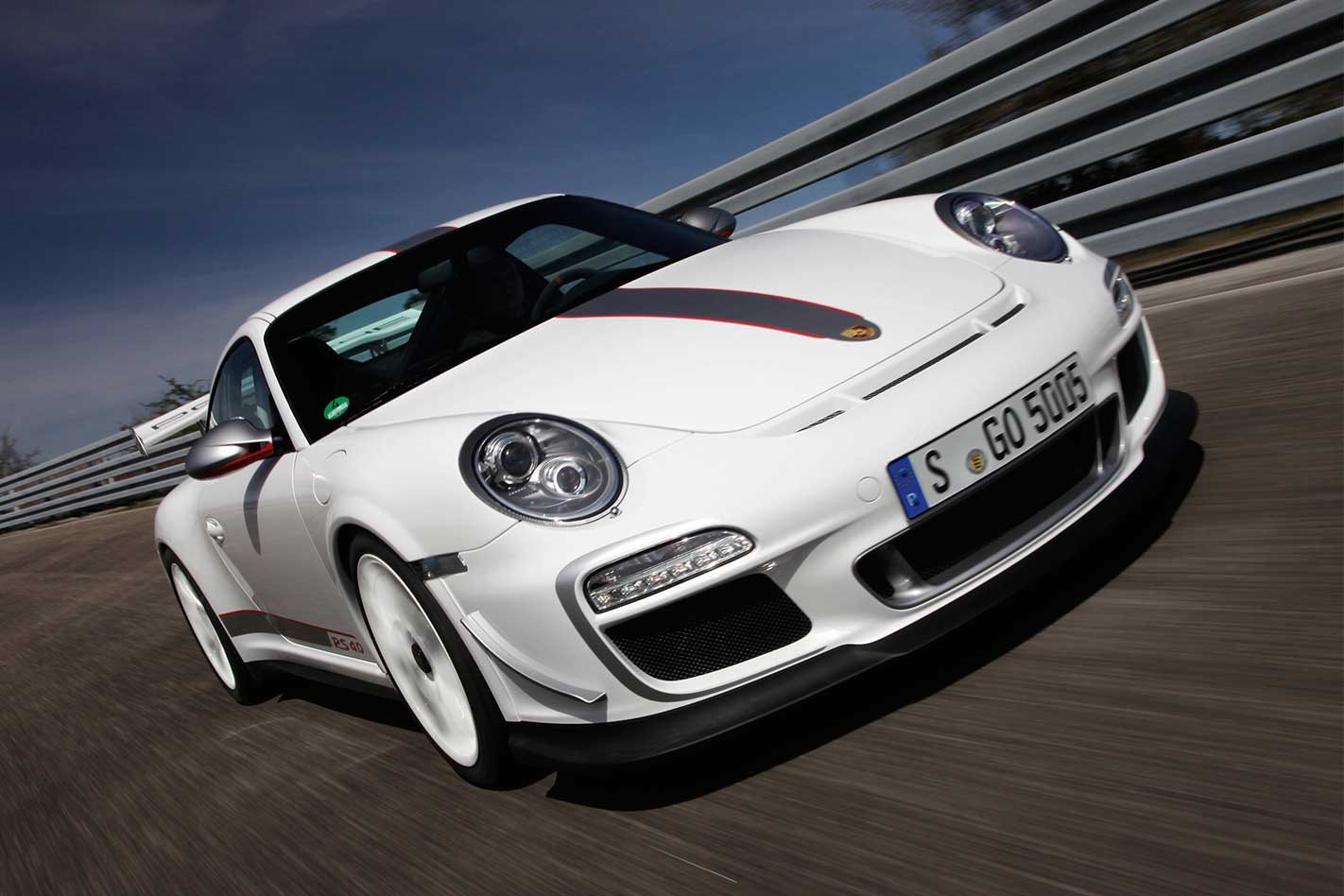With a bigger atmospheric induction flat-six in a body pared of unnecessary luxuries, the parallels between the 2011 997 Porsche 911 GT3 RS 4.0 and 1973 Carrera RS are unmistakable. As significant variants of Stuttgart’s evergreen sports coupe go, Porsche’s final 997 had it all.
The GT3, although less powerful than the Turbo and GT2, was the most focused of 911s and the RS took that up a notch, while tipping its hat to the definitive early 911. The final 997 was the last 911 with hydraulic steering and a handbrake and history shows that each time Porsche removes technology – like air-cooled cylinders – collector interest spikes.
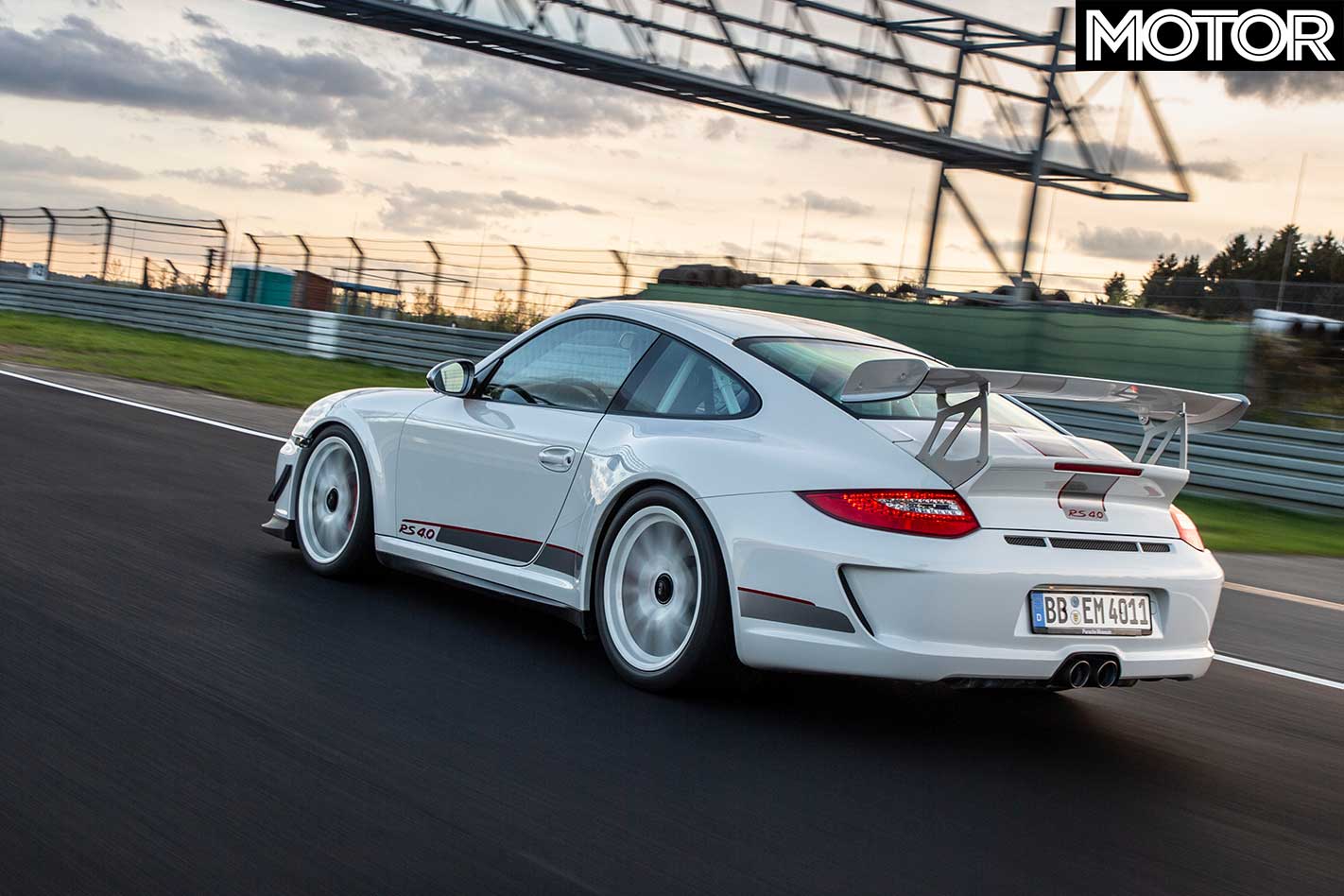
Perhaps most importantly, though, the RS 4.0 might be the 911 to drive (the ’73 RS being the one to own) balancing the nameplate’s old-world values with modern era driveability. The day-to-day sports coupe had never been so quick or, if you prefer, a sub-7min 30sec Nurburgring machine has never worn number plates with such nonchalance.
Porsche had to revive an engine line when the GT3 RS 4.0 was given the green light. Engineers slotted a GT3 R/RSR crank into the 3.8-litre block increasing stroke from 76.4 to 80.4mm which, with a 102.7mm bore, took capacity to 3996cc and created the largest 911 engine to date.
Beyond the capacity increase, development focused on improving airflow with a modified intake manifold featuring shorter runners, a variable induction system and variable valve timing, higher flow air filters in a carbon airbox, and a freer exhaust system with less restrictive catalytic converters.
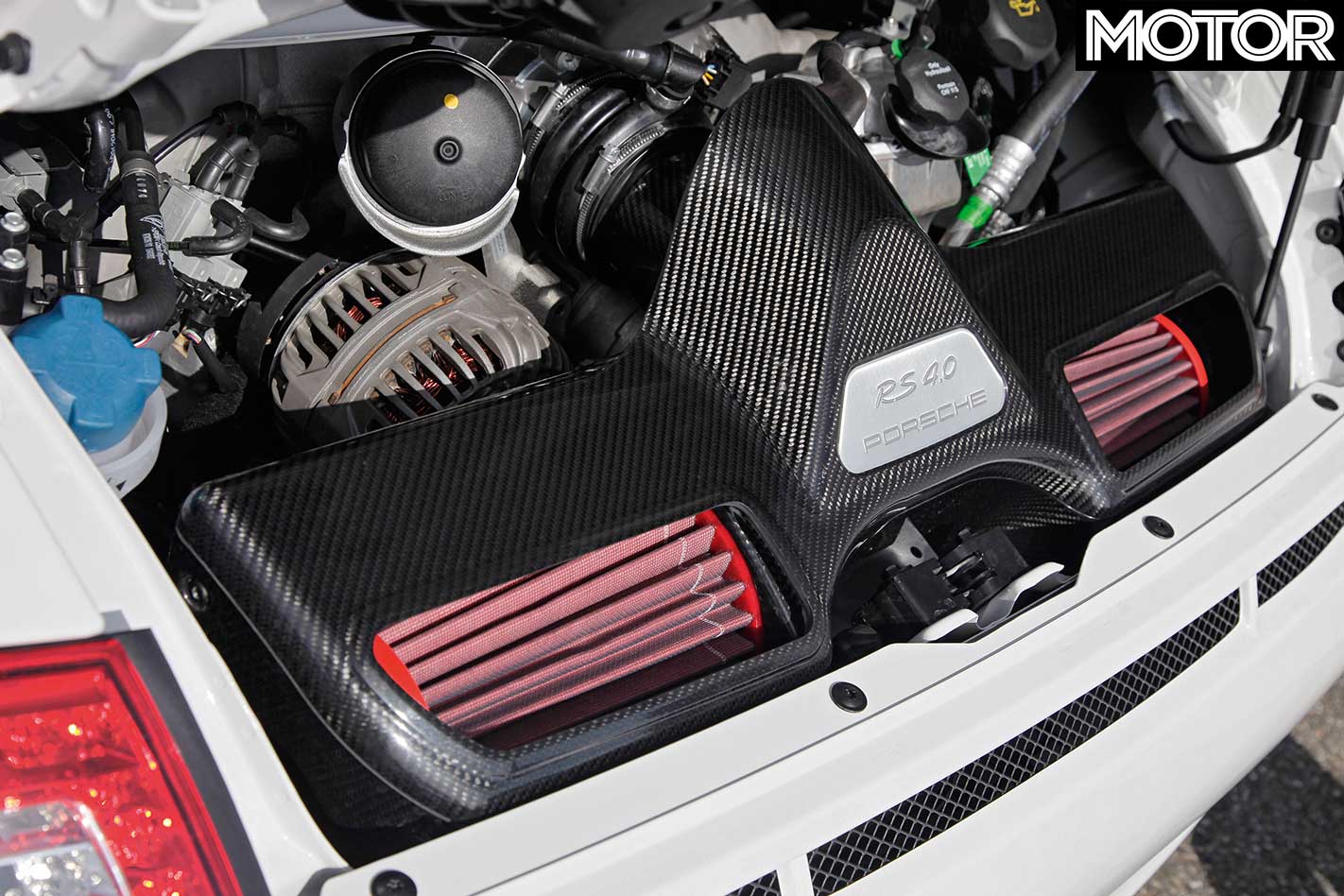
The stroked six set a new high mark for naturally aspirated 911 outputs. The RS 4.0’s 368kW (at a dizzy 8250rpm) and 460Nm at 5750rpm (which told little of its low-end shove) made it the ultimate development of the original 911 block (now in water-cooled form). Seven years on, the 911 GT3 RS eclipses the 4.0’s specific power of 92kW per litre by only 4kW.
Light weight is that other RS fundamental, yet further kilogram reductions were not easily achieved on the RS 4.0 given the amount of pruning that had already been done on the GT3. Reciprocating mass was a logical starting point, and a single-mass flywheel and titanium connecting rods bolted to forged pistons lightened the load.
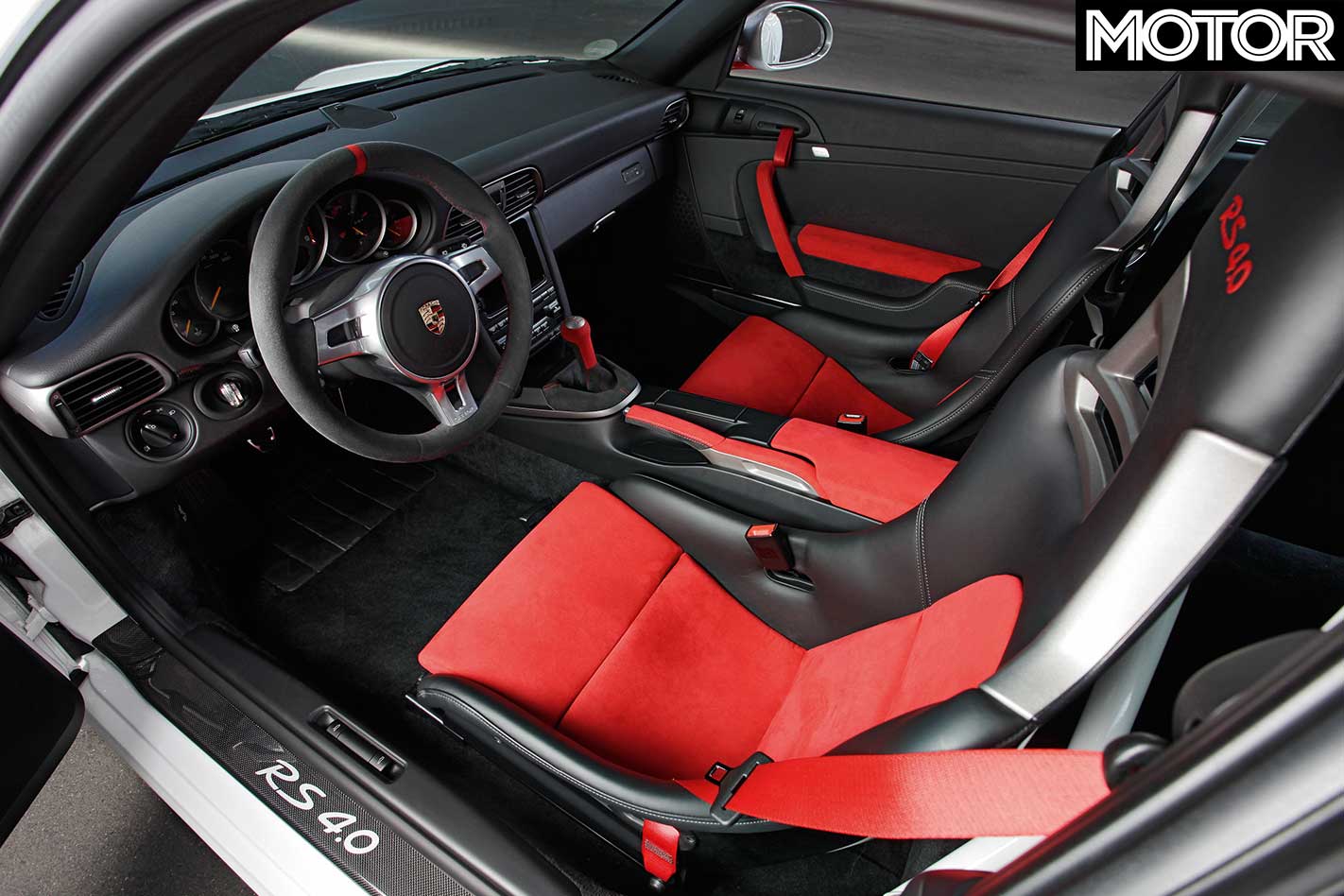
Shedding steel panels was next and Porsche replaced the front guards and front cargo compartment cover with carbon fibre versions, and ditched the glass rear quarter windows and rear windscreen for polycarbonate. One-piece seats weighing 8kg each and lightweight carpets saved more weight, which was somewhat offset by the mass of a half roll cage, although it increased the monocoque’s rigidity.
After all that the GT3 RS 4.0 had dropped just 10kg, however, its kerb weight of 1360kg – about the same as a Volkswagen Golf – gave it a power-to-weight ratio of 271kW/tonne.
Aerodynamic enhancements to the subtle 993-inspired 997 shape included front dive planes, or ‘flics’, to reduce lift and a large rear wing that kept the rear end planted. Downforce was a claimed 190kg at a v-max of 310km/h.

Suspension features unique spring and damper rates, specific toe and camber settings, and rose-jointed rear suspension links borrowed from the GT2 RS. Dynamic engine mounts controlled the mass of the flat-six. An optional pneumatic nose-lift did not improve track performance, but allowed the low snout to safely negotiate speed bumps on the street.
Porsche offered just two stark colours – black and Carrara white – but it was possible to order an RS 4.0 in any solid or metallic paint-to-sample shade you chose.
When it was launched, road testers revelled in the way the evolution from RS to RS 4.0 built on the qualities of the donor to make the 997 finale incrementally better by every measure. The attraction of increased displacement as a means to greater performance is that driveability benefits as much as outright acceleration, and the GT3 RS 4.0 was even more docile and flexible than lesser versions.
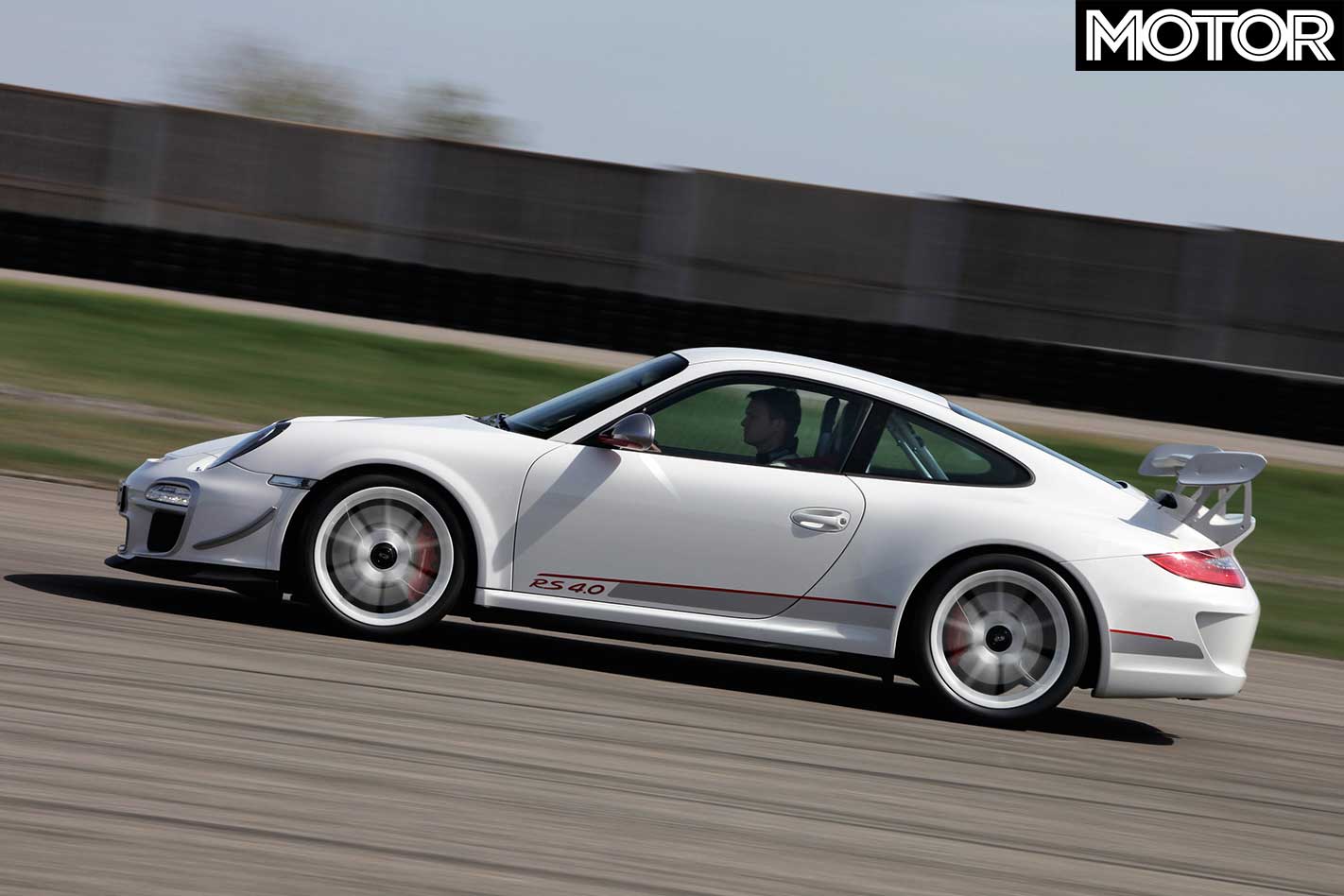
The advantages of a light body were evident everywhere too compared with a regular GT3, from sharper turning to more agile handling and more eager acceleration, and the suspension struck that unmistakable Porsche compromise of controlled-yet-compliant ride and handling.
Quick, yet unbreakably reliable, as satisfying to drive hard as it was to own and live with every day, the GT3 RS 4.0 delivered the essence of the 911 in highly concentrated form.
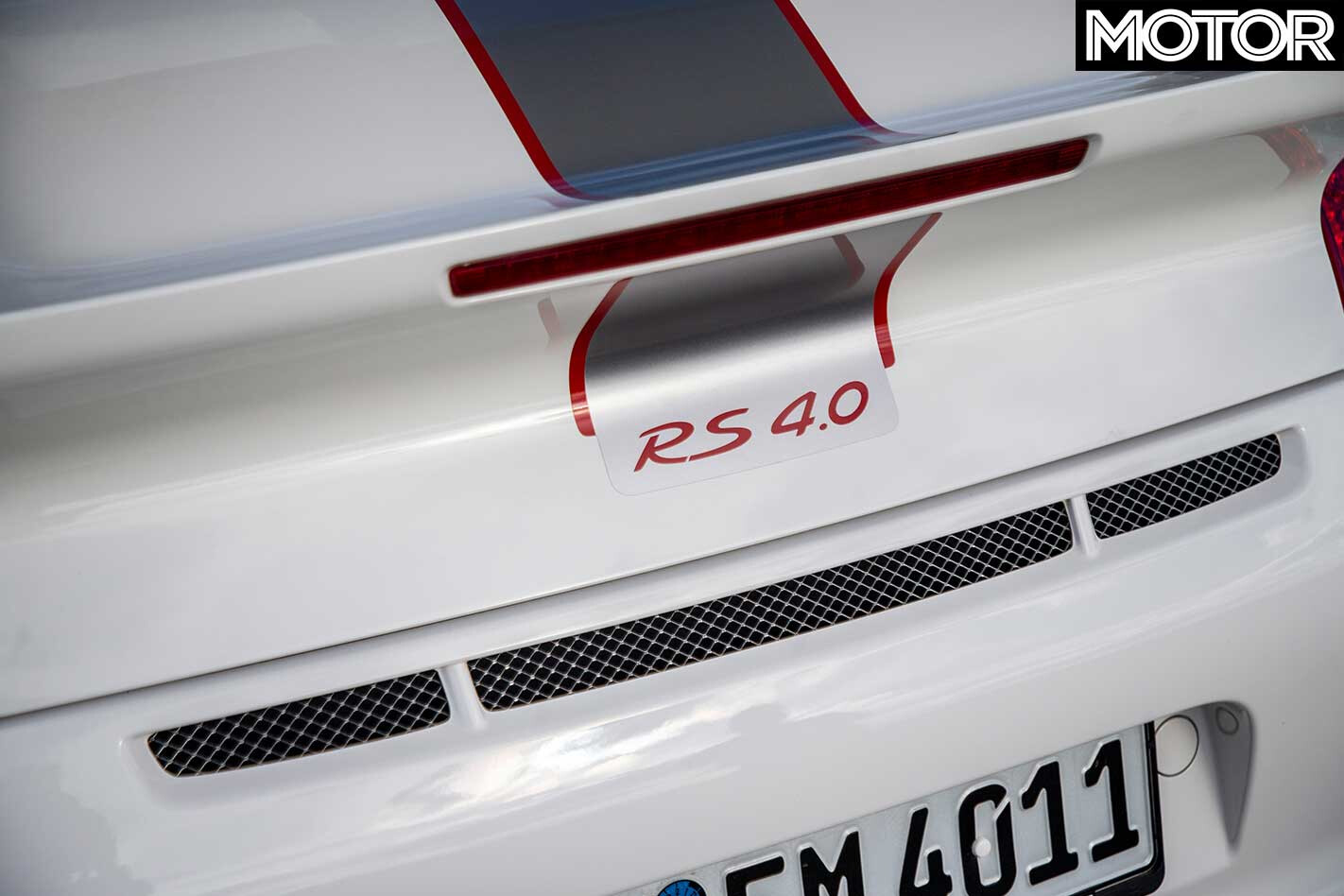
PORSCHE 911 997 GT3 RS 4.0 SPECS Year: 2011 Production: 600 Engine: 3996cc flat-six, rear-mounted Power/Torque: 368kW/460Nm Transmission: 6-speed manual Drive: rear 0-100km/h: 3.9sec Price: AUD$409,100 (new)

